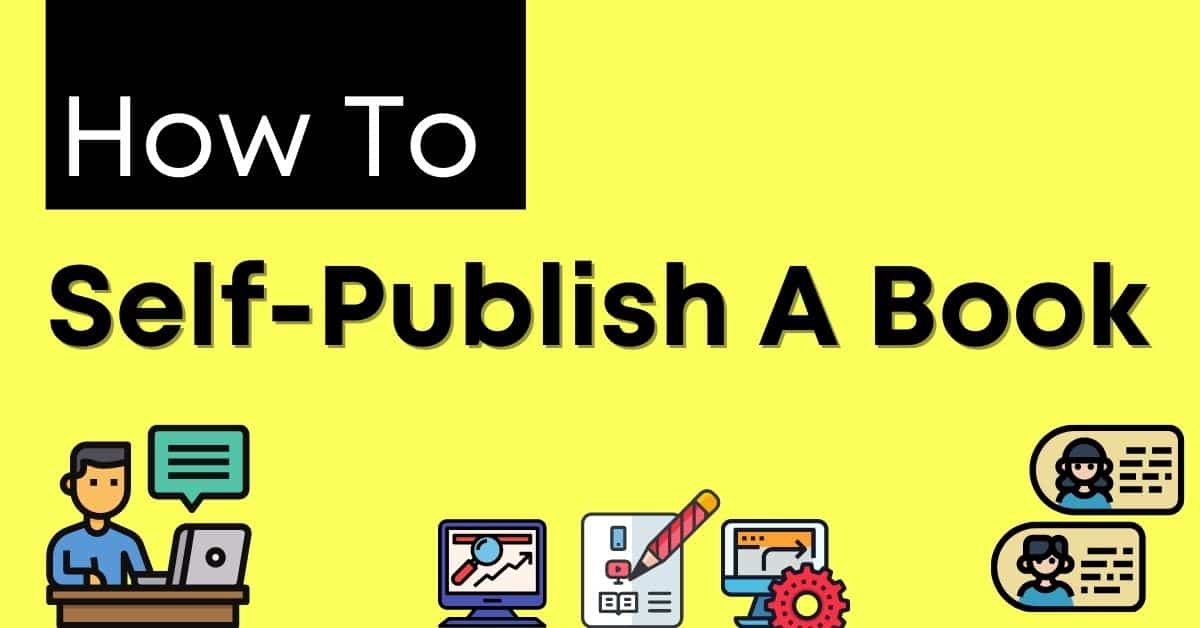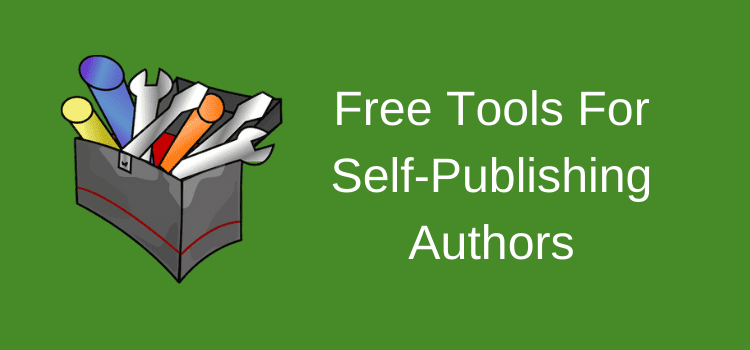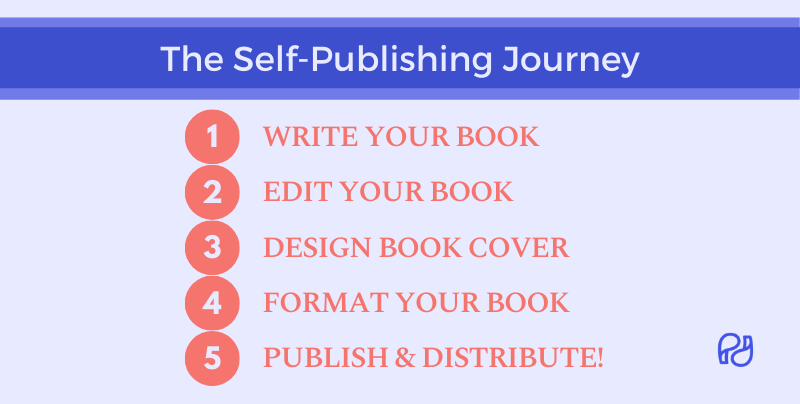Are you thinking about sharing your story or ideas with the world? You might have heard that self-publishing is free, but is it really?
Before you dive in, it’s important to know what costs could pop up along the way. Understanding this can save you time, money, and frustration. Keep reading to discover the truth about self-publishing costs and how you can make the most of your journey without breaking the bank.
Cost Components In Self Publishing
Self publishing can seem free at first, but costs often appear. Understanding these costs helps plan your budget. Some expenses are optional. Others are needed to make a quality book.
Knowing cost components in self publishing stops surprises. It also helps choose where to spend money wisely. Every part of the process can affect your total cost.
Editing And Proofreading
Editing improves your book’s quality. You fix grammar, spelling, and story flow. Proofreading catches small mistakes before publishing. Good editing costs money but makes the book professional.
Cover Design
A cover draws readers’ attention. A plain cover can hurt sales. Designers create covers that fit your book’s style. Custom covers cost more than templates but look unique.
Formatting And Layout
Formatting makes the book readable on devices. It adjusts fonts, margins, and chapter breaks. Proper layout works for ebooks and print books. Some authors format themselves; others hire experts.
Isbn And Copyright
ISBN is a book’s unique code for sales tracking. Some platforms offer free ISBNs, but owning one is better. Copyright protects your work legally. Registration costs vary by country.
Marketing And Promotion
Marketing helps readers find your book. Ads, social media, and book reviews cost money. Spending on promotion can increase sales. Many authors budget for marketing after publishing.
Printing And Distribution
Print books need physical copies made. Printing costs depend on pages and quantity. Distribution channels may charge fees or take a cut. Print-on-demand reduces upfront printing costs.
Editing And Proofreading Expenses
Editing and proofreading are vital steps in self-publishing. These tasks help catch mistakes and improve your book’s clarity. Skipping this stage can hurt your book’s quality and sales.
Many new authors wonder if editing and proofreading cost money. The truth is, these services usually come with expenses. Understanding these costs helps plan your self-publishing budget.
What Does Editing Include?
Editing checks your writing for errors and style. It fixes grammar, spelling, and punctuation mistakes. Editors also improve sentence flow and word choice. This makes the story easier to read and understand.
Proofreading Costs
Proofreading is the last step before publishing. It finds small errors missed during editing. Proofreaders check for typos and formatting issues. Their fee depends on book length and complexity.
Options To Reduce Expenses
You can edit your book yourself to save money. Ask friends or family to proofread for free. Use online tools to spot basic errors. These methods lower costs but may miss deeper issues.
Typical Price Ranges
Professional editing can cost from $300 to $3,000. Proofreading usually costs less, around $100 to $500. Prices vary by editor experience and book length. Budgeting for editing is crucial for success.
Cover Design And Formatting Fees
Cover design and formatting are key steps in self-publishing. These tasks make your book look good and easy to read. Many new authors wonder if these services cost money. The answer varies. Some tools are free, but many authors pay for professional help.
Good cover design grabs attention. Formatting ensures the book fits digital and print standards. Both affect reader experience and sales.
What Are Cover Design Fees?
Cover design fees depend on the designer’s skill and experience. Simple covers may cost less. Complex, custom designs usually cost more. Prices range from $50 to several hundred dollars. Some authors use free templates. Others hire professionals for a unique look.
Formatting Costs For Self-publishing
Formatting means setting up the book’s text and layout. This includes fonts, margins, and chapter breaks. Some software offers free formatting tools. Paid services create polished, error-free files. Formatting fees can range from $50 to $300. Quality formatting helps prevent printing errors.
Free Tools Vs Paid Services
Free tools are available online for covers and formatting. They work well for simple projects. Paid services provide better design and polish. Many authors choose paid help for a professional appearance. The choice depends on budget and skill level.
Marketing And Promotion Costs
Marketing and promotion are key parts of self-publishing. They help your book reach readers. These efforts often cost money. The costs vary depending on your plan and tools. Budgeting for marketing is important for success.
Advertising Expenses
Paid ads on social media or book sites cost money. Prices depend on the platform and ad length. Some ads cost a few dollars a day. Others need a bigger budget. Ads help reach more readers fast.
Book Cover And Design
A good cover attracts readers. Many authors pay for professional design. Custom covers can cost from $50 to several hundred dollars. A well-made cover can boost sales.
Promotional Services
Some authors use services to promote their books. These include email newsletters or book review sites. Fees vary by service and package. These services help get the word out.
Social Media And Content Creation
Creating posts and videos takes time and tools. Some authors pay for design apps or video editors. Spending on content helps keep readers interested. It builds an author’s audience over time.
Distribution Platforms And Their Charges
Distribution platforms play a key role in self-publishing your book. They help your book reach readers worldwide. Most platforms offer free setup but charge fees later. Knowing these charges helps plan your budget well.
Each platform has its own way to charge for services. Some take a percentage of sales. Others may charge fees for extra services like marketing or print copies. Understanding these costs is important before choosing a platform.
Amazon Kindle Direct Publishing (kdp) Fees
Amazon KDP does not charge upfront fees for eBook publishing. It takes 30% to 65% of your book’s sale price as a royalty. The exact percentage depends on the book price and sales region. Print book options have printing costs deducted from royalties.
Apple Books Charges
Apple Books offers free publishing without setup fees. Apple takes 30% of the sale price as commission. Authors keep 70% of each sale. There are no extra fees for distribution or listing.
Draft2digital Pricing
Draft2Digital charges no upfront fees for eBook distribution. It keeps about 10% of your book’s retail price from each sale. This fee covers distribution to many retailers. There are no hidden costs for publishing or listing.
Ingramspark Costs
IngramSpark charges setup fees for both print and eBooks. The fees usually range from $25 to $49 per book. There are also printing costs for print copies. IngramSpark takes a percentage of sales as a commission.
Smashwords Pricing Model
Smashwords does not charge upfront fees. It deducts about 15% from your book sales. This covers distribution to many retailers and libraries. Authors keep 85% of the sales revenue.

Credit: davidgaughran.com
Benefits Of Self Publishing
Self publishing offers many benefits for writers who want control and flexibility. It allows authors to share their stories quickly and reach readers directly. The process is simple and often cost-effective.
Authors keep their rights and can make changes anytime. This freedom appeals to many writers who want to shape their own path. Self publishing also helps build a personal brand and connect with readers globally.
Control Over Content And Design
Authors decide what goes into their book. They choose the cover, layout, and style. No one else changes the story or design without permission. This control ensures the book matches the author’s vision exactly.
Faster Time To Market
Traditional publishing takes months or years. Self publishing can release a book in days or weeks. This speed helps authors respond to trends or personal goals quickly. Readers get access to fresh content sooner.
Higher Royalties
Self published authors keep more money per sale. They avoid many fees and middlemen. This means earnings grow as book sales increase. Writers can earn a fair income from their work.
Global Reach
Self publishing platforms sell books worldwide. Authors reach readers in many countries easily. Digital books can be downloaded on various devices. This wide reach helps build a diverse audience.
Flexibility To Update Content
Authors can edit and improve books anytime. New editions can fix errors or add information. This flexibility keeps books current and relevant. Readers benefit from updated and accurate content.
Balancing Costs With Potential Earnings
Self-publishing is often seen as free. The truth is more complex. You can publish without paying upfront fees. Still, many costs may appear during the process. Balancing these costs with what you can earn is key.
Spending money can improve your book’s quality. It can also increase your chances of selling more copies. At the same time, keeping costs low helps protect your profits. Understanding both sides helps you make smarter choices.
Common Costs In Self-publishing
Editing is one of the main expenses. A good editor can fix grammar and improve your story. Cover design is another cost. A professional cover attracts more readers. Formatting your book for different devices might require help too.
Marketing and advertising also need a budget. Promoting your book helps reach more people. Some authors spend on book reviews and social media ads. Print copies and distribution can add costs as well.
Ways To Earn From Self-publishing
Royalties from sales form the main income. Digital books often pay higher royalties than print. Some platforms offer 70% royalty rates. You can sell on many websites worldwide. Selling directly to readers can increase earnings too.
Other income sources include audiobook sales and foreign rights. Offering your book in multiple formats widens your audience. Bundling books or running promotions can boost sales. Building a loyal reader base helps future earnings.
Finding The Right Balance
Start with a budget and plan your spending. Invest in areas that improve your book’s quality most. Editing and cover design usually give the best return. Use free tools and resources where possible. Track your sales and adjust your strategy.
Test small marketing campaigns before spending more. Keep learning about your audience and what they want. Balance spending with realistic earnings goals. Being smart with money helps your self-publishing journey succeed.

Credit: justpublishingadvice.com

Credit: publishdrive.com
Frequently Asked Questions
Is Self Publishing Really Free For Authors?
Self publishing can be free, but some costs may appear for editing, cover design, or marketing.
What Are Common Hidden Costs In Self Publishing?
Editing, cover design, formatting, and marketing often require money even in self publishing.
Can I Publish A Book Without Paying Any Fees?
Yes, using platforms like Amazon KDP, you can publish without upfront fees.
Do I Need To Buy Isbn For Self Publishing?
Some platforms provide free ISBNs, but buying your own offers more control.
Is Marketing Free When Self Publishing A Book?
Marketing usually costs money for ads or promotions to reach more readers.
How Much Does Editing Cost In Self Publishing?
Editing costs vary widely but typically range from $100 to $500 or more.
Are Free Book Covers Good Enough For Self Publishing?
Free covers exist but custom covers look more professional and attract more readers.
Conclusion
Self-publishing can cost little or nothing at first. You pay no fees to upload your book on many platforms. Still, some expenses may come later, like editing or marketing. These help your book look professional and reach readers. Writing and publishing your book takes time and effort too.
You control the whole process and keep more profits. Think about your goals and budget before starting. Self-publishing offers a flexible way to share your stories with the world.